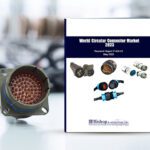Underwater Connectors Get Smaller and Tougher for Submarines and UUVs
Undersea applications for connectors used by the U.S. Navy are expanding. Not only are submarines now joined by unmanned underwater vehicles, but a third emerging category includes devices used in seabed warfare and communications.
The undersea environment is one of the harshest that military electronics systems must withstand. Submarines must stand up to constant pressure cycling, while unmanned underwater vehicles (UUVs) that dive deep must cope with high pressure. In addition to pressure, the types of shock that could cause a connector to crack or leak underwater include thermal, vibration, and explosive shock. Both submarines and UUVs must also survive stressors such as temperature cycling and cope with corrosion from exposure to seawater over extended periods of time.
A wide variety of UUV designs is under development. Among the more typical cylinder-shaped models is the Navy’s Knifefish Surface Mine Countermeasure Unmanned Undersea Vehicle Program. It received Milestone C approval in 2019, paving the way for the system to enter low-rate initial production. General Dynamics Mission Systems currently has a contract.
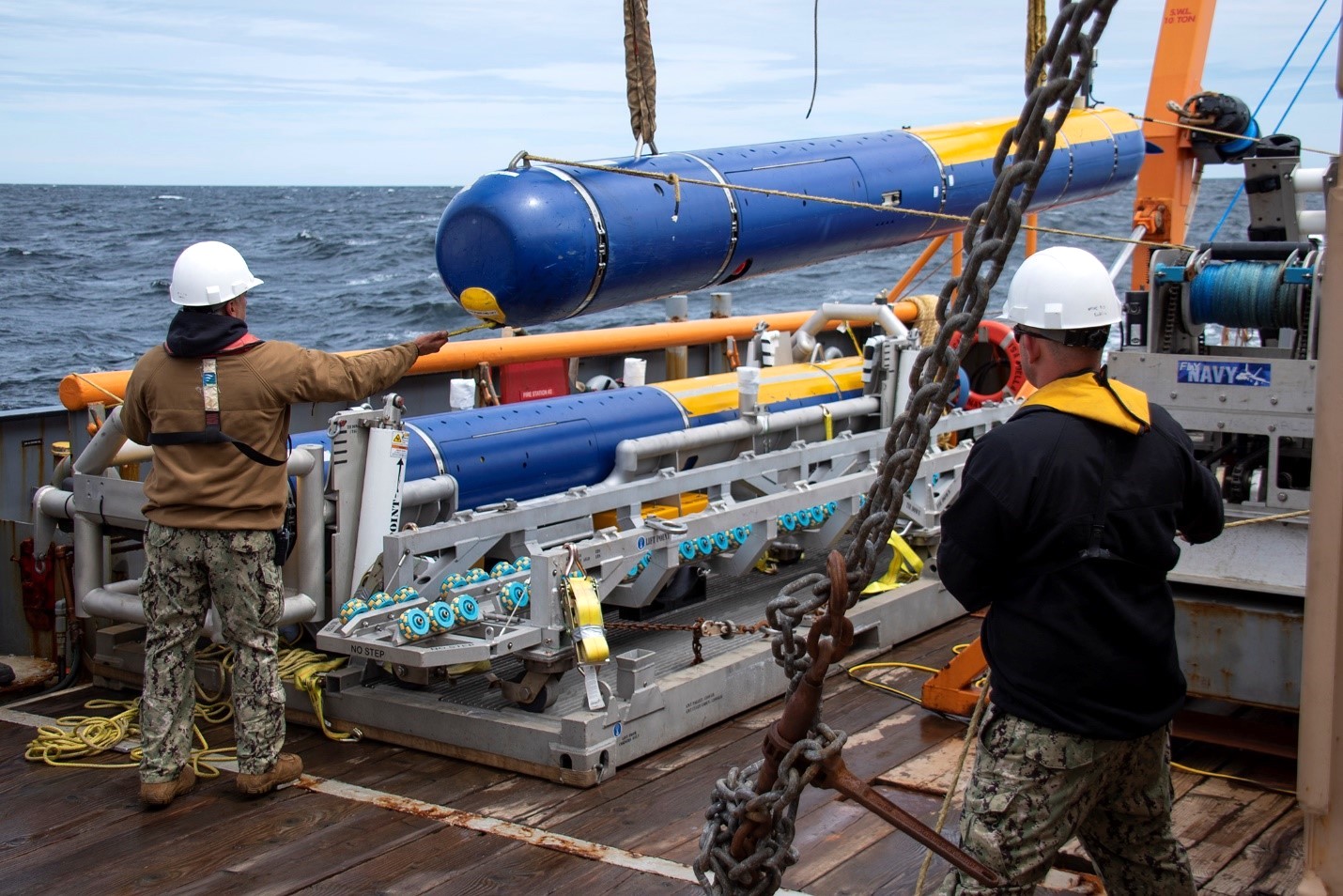
The U.S. Navy’s Knifefish unmanned underwater vehicle (UUV) system is designed for deployment from a littoral combat ship, vessels of opportunity, or from shore. The two-UUV system detects and classifies buried, bottom, and volume mines in high-clutter environments.
More exotic designs are being developed in programs overseen by the Defense Advanced Research Projects Agency (DARPA). DARPA recently awarded contracts for work demonstrating critical technologies on a new class of UUV. The long-duration, long-range, payload-capable Manta Ray will operate for extended periods of time without the need for maintenance or on-site support, thereby increasing at-sea operational capacity for commanders during combat.
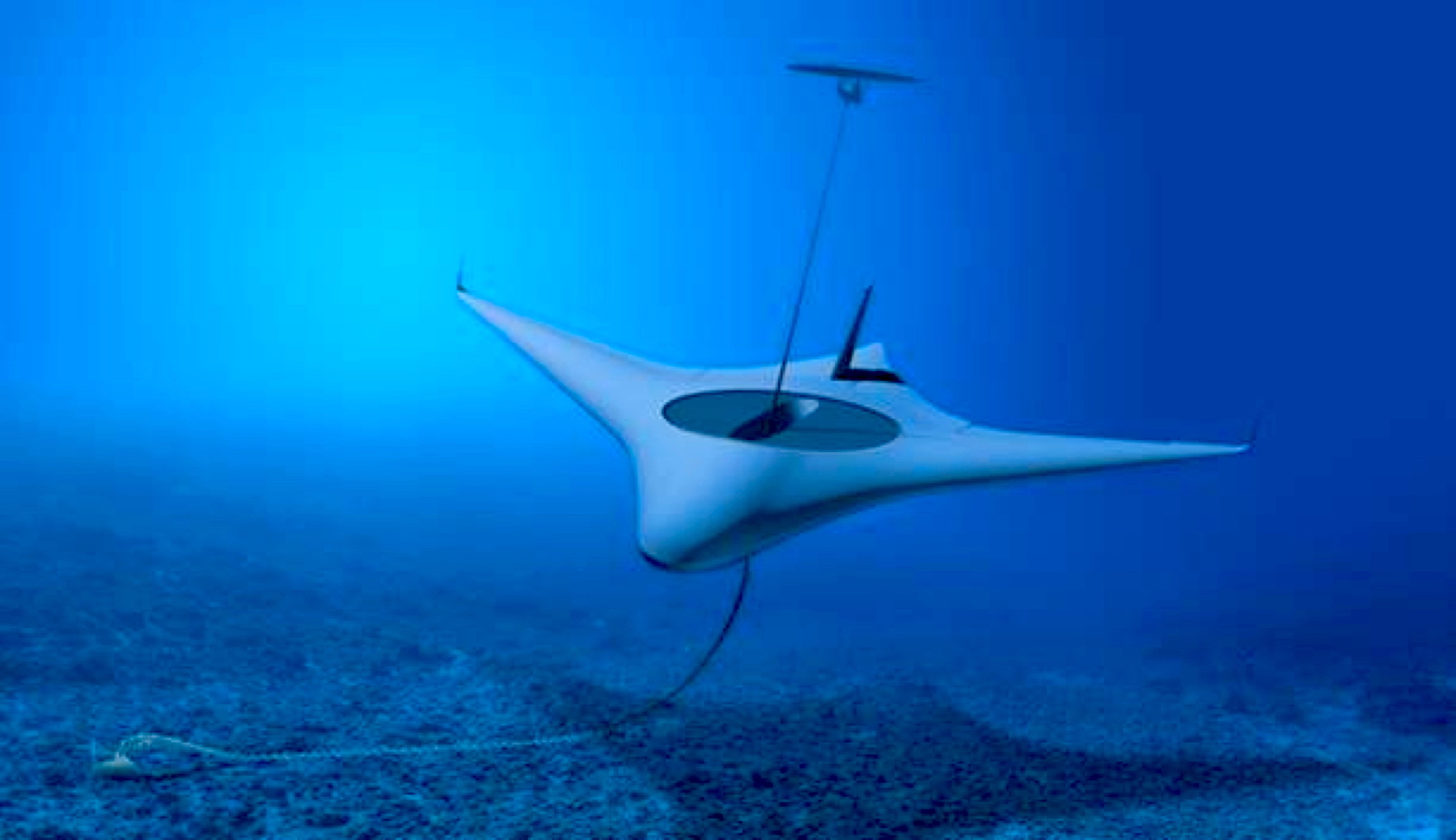
An artist’s rendering of DARPA’s Angler unmanned underwater vehicle.
Another DARPA UUV in development is the Angler. This fully autonomous robotic vehicle will navigate and survey the deep ocean and manipulate objects on the sea floor, while not relying on either GPS or human intervention during lengthy missions over long distances.
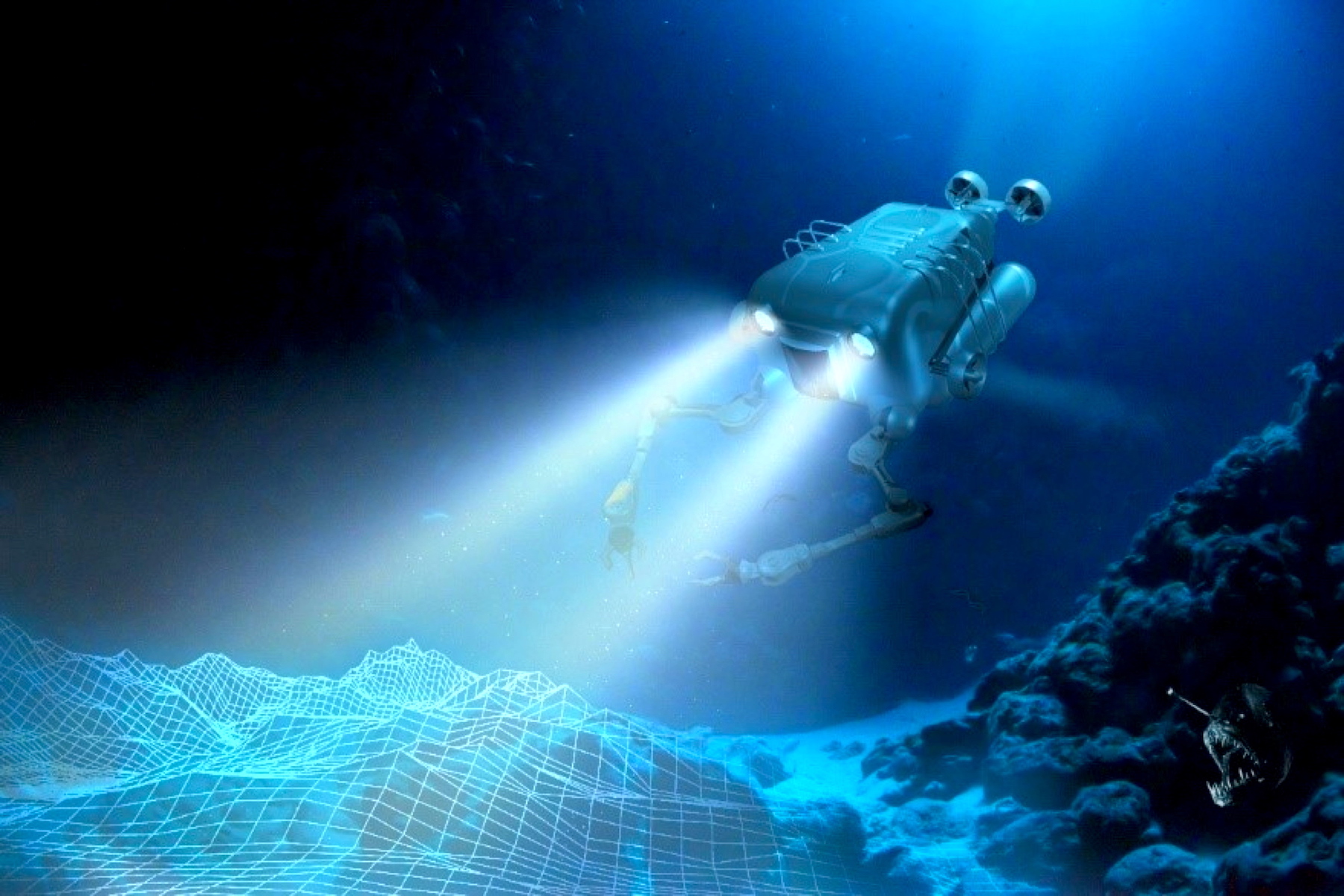
An artist’s rendering of DARPA’s Angler unmanned underwater vehicle.
The sizes of UUVs are very wide ranging, from about the size of a football to almost as large as a commercial aircraft, said Thomas Schwinn, global military marine business leader for TE Connectivity (TE). The largest are called XLUUVs, and one example is Lockheed Martin’s Orca, which is under contract to the U.S. Navy. Throughout defense, the ultimate vision for UUVs is closely based on what UAVs can do, said Schwinn: Just as UAVs give coverage where you can’t always put an airplane, UUVs give coverage where you can’t always put a submarine. UUV development has just taken longer because the underwater environment is tougher, especially for navigation.
The U.S. Navy deploys UUVs differently depending a lot on their size. “In general, they want an XLUUV for its large payload and the fact that it can run up to six months without the need for a support ship,” such as for data transfers or recharging, said Schwinn. The Navy also wants medium- to large-sized UUVs that don’t require a support ship.
Smaller UUVs are used for other missions, like basic anti-sub warfare. Multiple smaller UUVs can cover more areas and also can be networked together. “These must be able to navigate autonomously, via extended battery life,” said Schwinn. “Smaller UUVs that must be launched from a ship, must then be brought back in and sent back out.”
Connector Needs for Underwater Environments
The first requirement for connectors used in submarines, UUVs, and vehicles deployed in seabed warfare or communications is, of course, to be waterproof. “That’s a given,” said Schwinn. TE’s Marine, Oil, and Gas business unit is focused strictly on wet and subsea applications for submarines and unmanned vehicles, he said. Systems in the emerging seabed warfare or communications category can include distributed sensor networks.
The kinds of connectors that can be used for U.S. Navy submarines are limited to those that comply with MIL SPEC 24231 and 2421, said Schwinn.
One of the biggest ongoing changes in connectors used for submarines is the placement of more and more electronics outside of the pressure hull instead of inside. Especially for SONAR, the big push is to process sensors outboard instead of inboard. Arrays have grown and there are so many cables now that it’s not feasible to put many more holes through the submarine’s hull.
“It’s as much about connector density and cable management as it is about enlarging the size of the array,” said Schwinn. “This move to outboard electronics, the move to consolidate signals, and bringing signals inboard through a penetrator in a sub hull to be processed inboard, is one of the biggest changes I’ve seen in the last 20 years.”
TE’s connectors for submarines, especially its SEACON brand, has been successful because of its high-density arrays, with more pins from the sensor to the outboard electronics, said Schwinn. SEACON comprises low-profile, high-density connectors that have really taken off in underwater applications, especially TE’s MINI-CON product line.
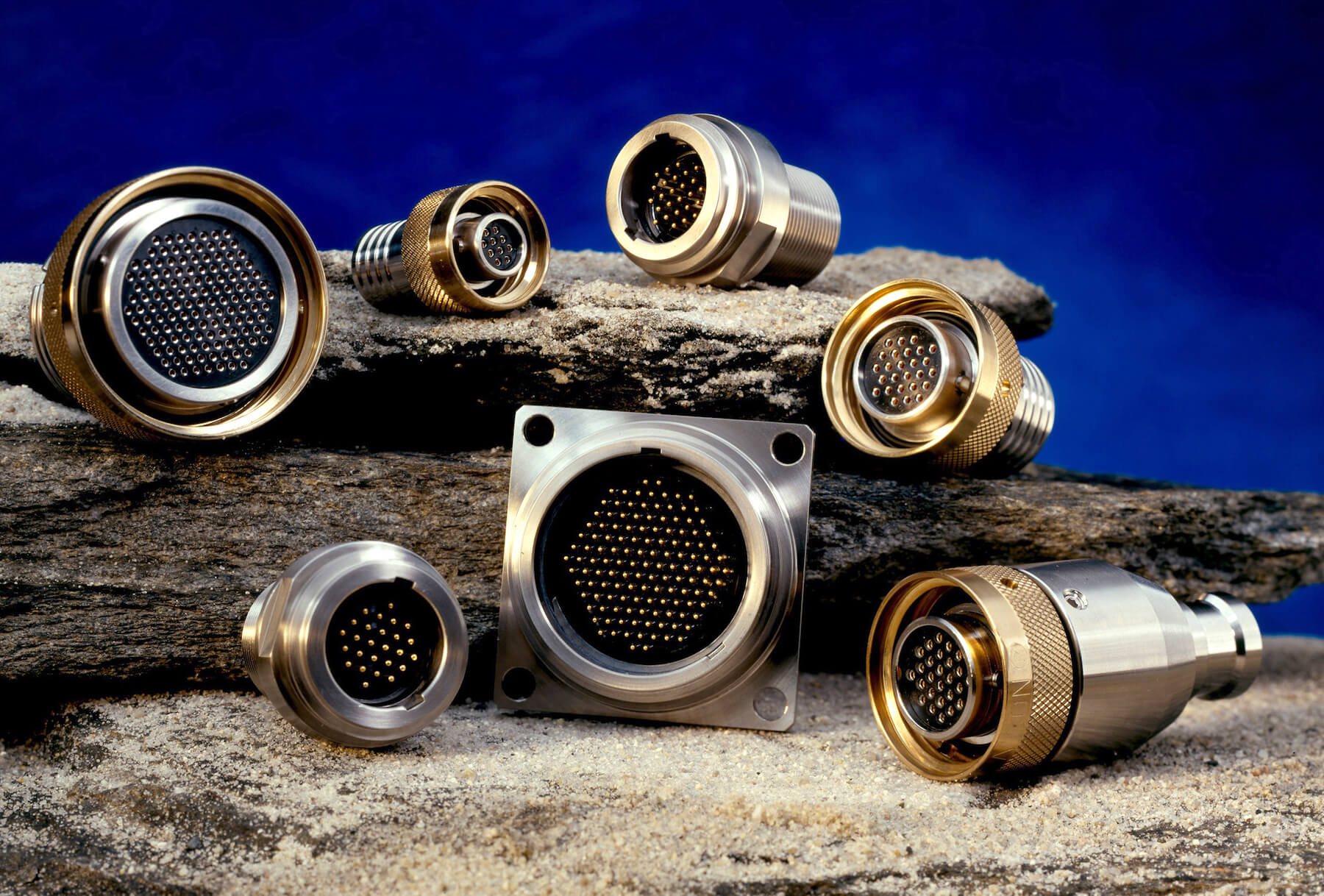
TE Connectivity’s SEACON MINI-CON connector
In UUVs, there’s a requirement for high density, but somewhat less so than for submarines. Here, the biggest need is for small, compact connectors that can move data “at Ethernet frequency rates and Category 5 and Category 6 cable data rates, which is important for a lot of subsystems,” said Schwinn. This is because after being out at sea for weeks at a time, the UUV must come in and download a lot of data fairly quickly.
In addition to being waterproof and able to handle shock and vibration, the priority for UUVs is making connectors even smaller to fit in more electronics. For these applications, TE’s customers use its Micro MINI-CON and HUMMER connectors. For UUVs that don’t need a metal shell, TE’s rubber molded connectors provide low cost and excellent service life.
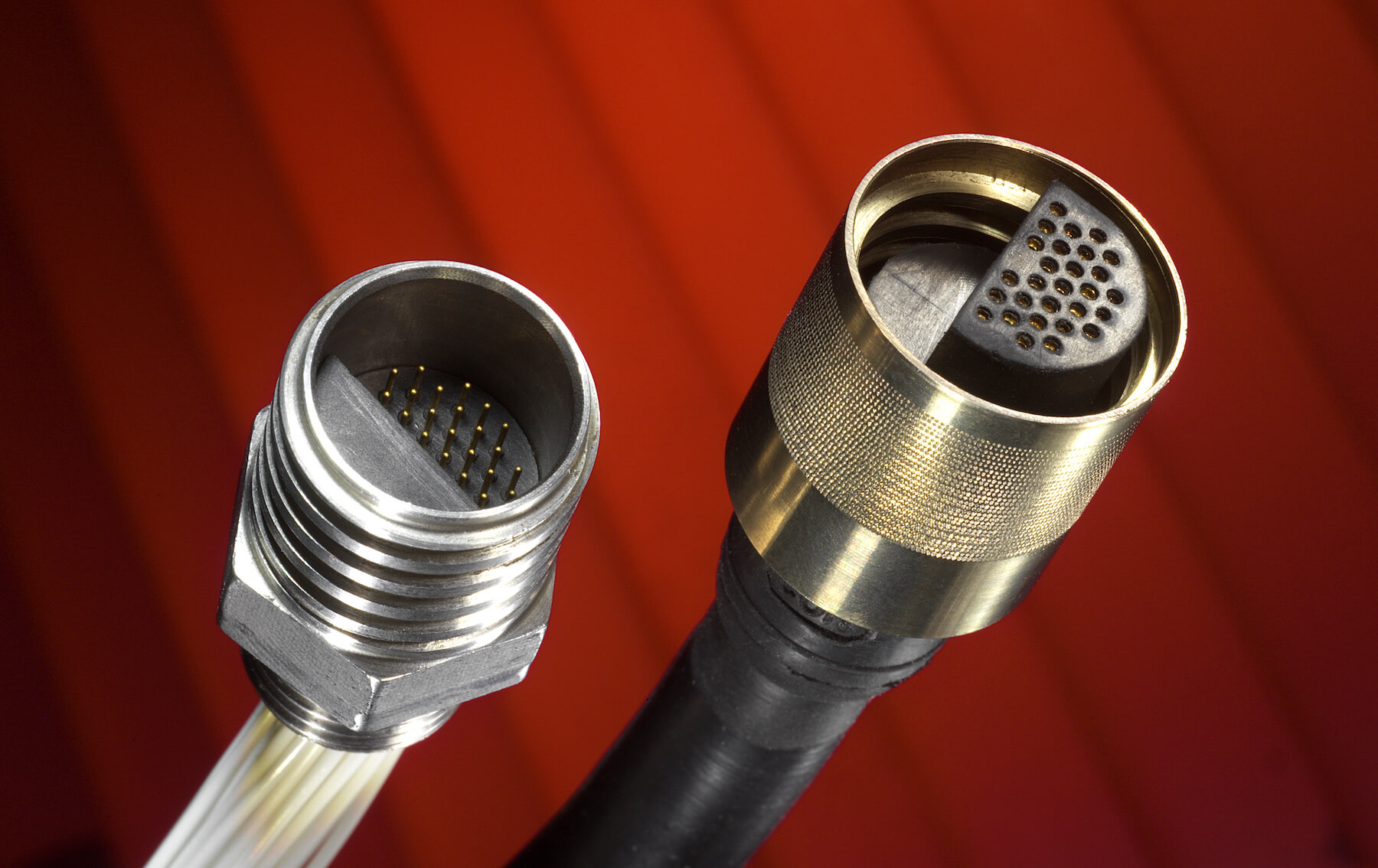
TE HUMMER connector
In seabed warfare and communications applications, the U.S. Navy wants to move operations as much as possible to the ocean floor instead of topside, said Schwinn. There, they won’t be visible to satellites or to the enemy. That means not raising and lowering subs or UUVs to a support ship for recharging or downloading data. “The U.S. Navy envisions large subsea communications networks, charging stations for UUVs, and docking stations where data transfers can be done without broadcasting them on the surface,” he said.
Here, the need is for underwater-mateable electric and fiber optic connectors for the arm on a remotely operated vehicle (ROV) that mechanically engages the connector. “These connectors are key to the development of these subsea projects as they make installation much easier than previous methods, which included dry mating connectors on a ship deck and then lowering the cable assemblies to the sea floor,” said Schwinn. TE’s connectors that are critical to making installations easier are HydraElectric underwater-mateable electric connectors, and fiber optic HydraLight connectors that can be mated at depths of 7,000 meters.
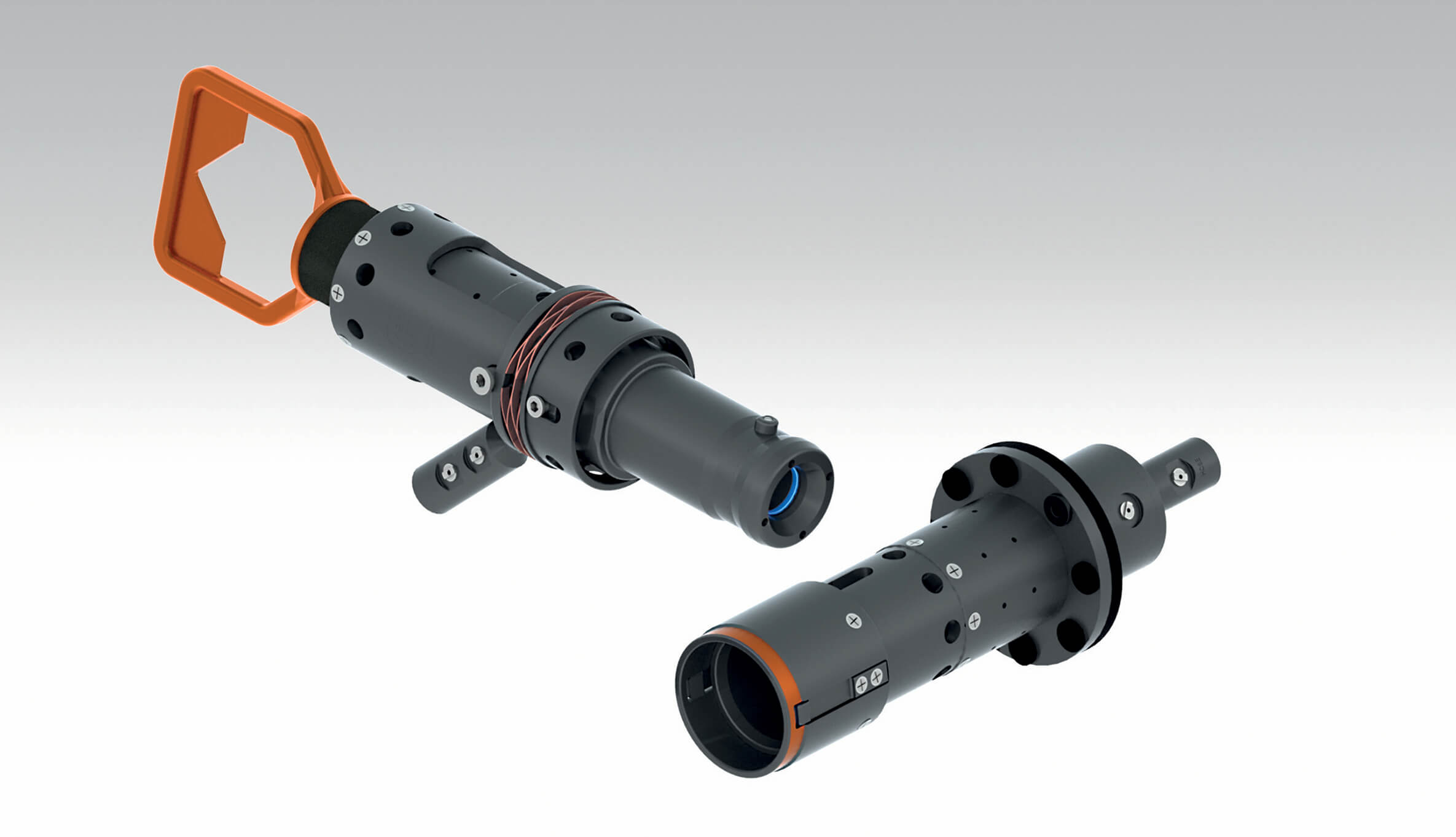
TE HydraLight connector
New Underwater Connector Designs
One new wet-mate connector design is the result of technology developed by Northrop Grumman. In 2020, the company signed the first non-exclusive agreement to manufacture niobium-based connectors designed for harsh environments.
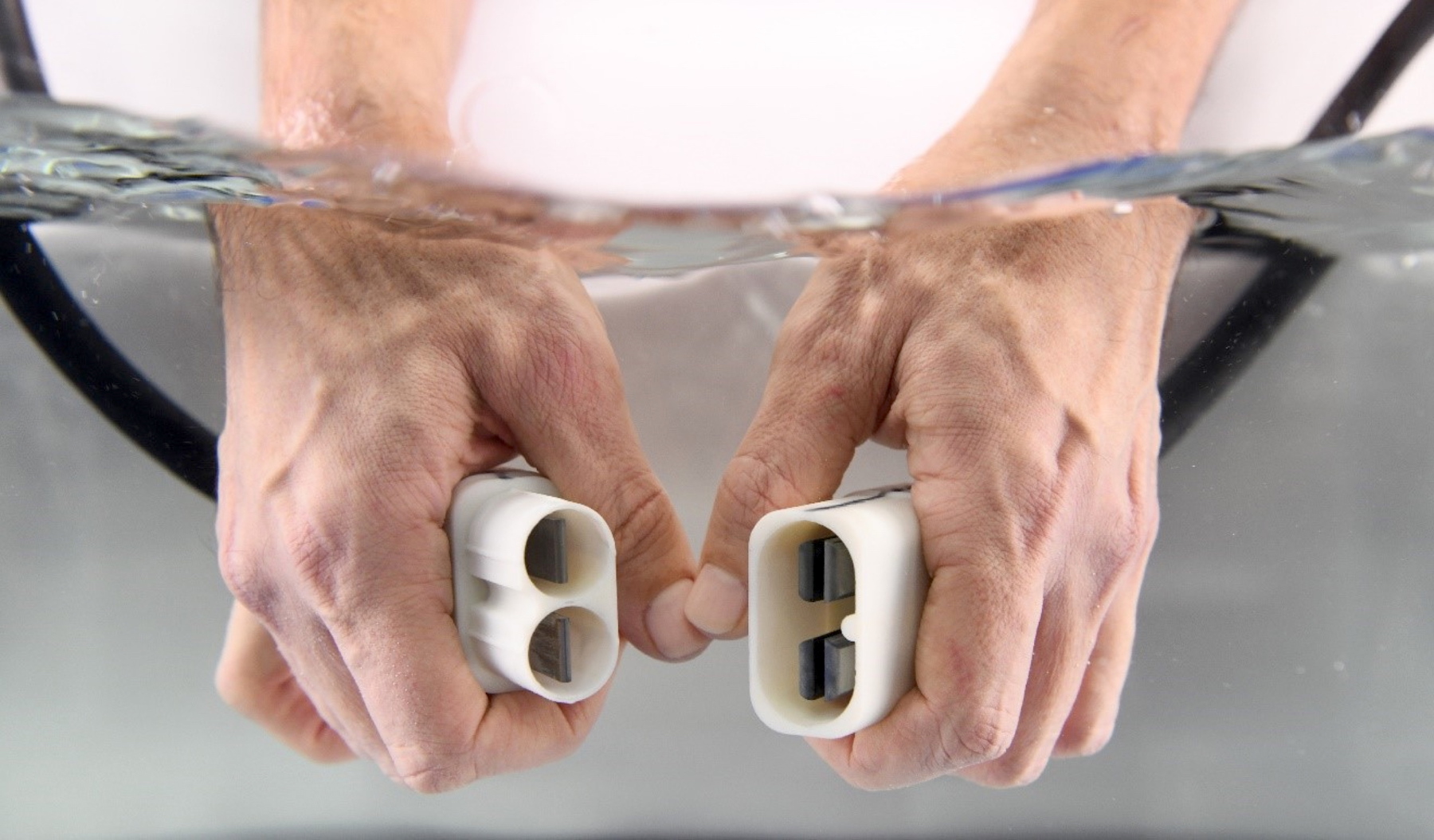
Northrop Grumman has licensed iCONN Systems to introduce wet-mateable connectors for undersea military uses. These niobium-based connectors let data and electricity pass underwater for a variety of military undersea applications.
The NiobiCon technology is “a new way of making electrical connections underwater that enables power transfer and data exchange without using seals, oil, or moving parts,” the company said. The technology was developed specifically as a more efficient method of recharging unmanned vehicles underwater. Contact with water makes the connector create a thin isolating layer. This is destroyed when the connection is made, but regenerates after subsequent disconnection. The connectors will be manufactured by iCONN Systems.
Like this article? Check out our other harsh environment, waterproof, and autonomous vehicle articles, our Military/Aerospace Market Pages, and our 2020 and 2019 Article Archives.
- Underwater Connectors Get Smaller and Tougher for Submarines and UUVs - November 10, 2020
- Small Military UAVs Demand Smaller, Lighter Connectors - August 4, 2020
- Commercial Connectors Toughen Up for the Harshest Environments in the Universe - June 2, 2020



